Choose the Right Flat File for Your Studio
Flat files are large, shallow storage cabinets designed to keep artwork, blueprints, maps, and important documents flat and protected. They help prevent creasing, bending, or damage, making them ideal for artists, architects, and anyone handling oversized paper.
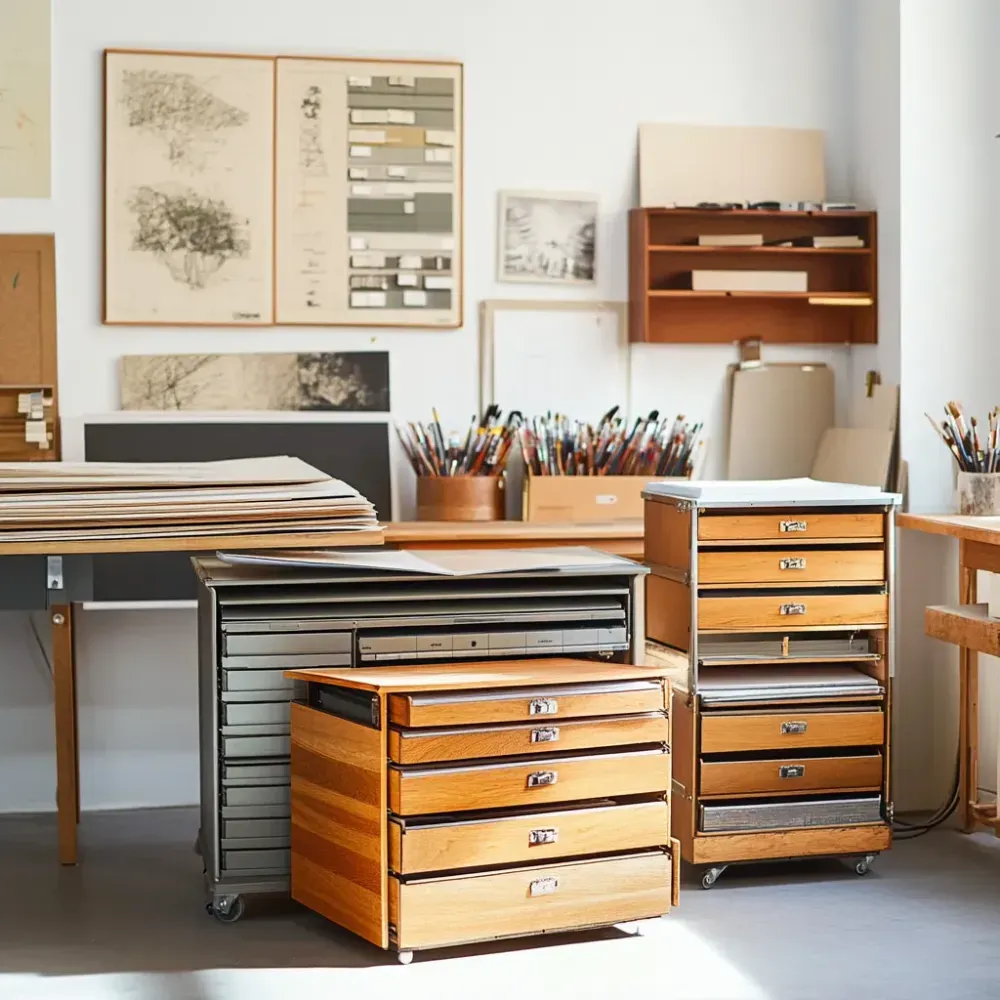
Have you ever felt overwhelmed by stacks of drawings, paintings, or prints scattered around your workspace? It’s easy to end up with a leaning tower of art if you don’t have a proper storage solution. That’s where a flat file comes in. It can hold your pieces without bending or damaging them, keeping your studio neat and giving you quick access whenever inspiration strikes.
Choosing the correct flat file might be tricky, especially if you’re unsure which size or style suits your space. But don’t worry because this post is here to break it all down for you. We’ll look at the size, material, and must-have features simply. By the end, you’ll have a clear idea of which flat file might best fit your artwork. Let’s start with the basics.
Why Flat Files Matter?
Before diving into the details, let’s discuss why a flat file is worth considering. Storing art isn’t just about keeping it out of the way. It also helps protect your work from dust, creases, or accidental spills. The pressure could lead to unwanted dents if you leave your drawings or prints stacked on a shelf. A flat file, however, lays each piece flat, reducing the risk of bending. It also lets you sort items by size, date, or medium. That way, you can reach for what you need without rummaging through random piles.
Many professional artists and designers use flat files in their studios. But you don’t have to be a seasoned pro to benefit from one. Whether you’re a casual hobbyist or someone who sells art, having a dedicated storage system can save you time, stress, and money in the long run. After all, damaged art can’t be easily fixed. Now, let’s jump into the first big choice: size.
How to Choose the Right Size of a Flat File?
Size is often the first thing that comes to mind when picking a flat file. After all, you need something to hold your artwork without cramming it in. At the same time, you don’t want a massive cabinet hogging all your studio space if you primarily work on smaller pieces.
Key Questions to Ask
- What size are your most significant pieces?
If you often work on 24x36-inch sheets, pick a flat file that accommodates them. If you are unsure, measure some of your most significant art pieces to get an idea. - How many pieces do you have?
Do you only store a few at a time, or are you a busy creator with piles of drawings? This affects how many drawers you might want. - How much room do you have in your studio?
Measure your available space. A vast flat file might be tempting, but if it won’t fit through your door or blocks your main walkway, that’s a problem.
Common Flat File Sizes
Typical Dimensions | Best For | Remarks |
|---|---|---|
18x24 inches | Smaller works, sketches | Suitable for limited studio space |
24x36 inches | Medium-to-large drawings | A popular choice for a range of projects |
30x42 inches or bigger | Oversized posters, large prints | Great if you create large-scale artwork often |
Picking the Right Material
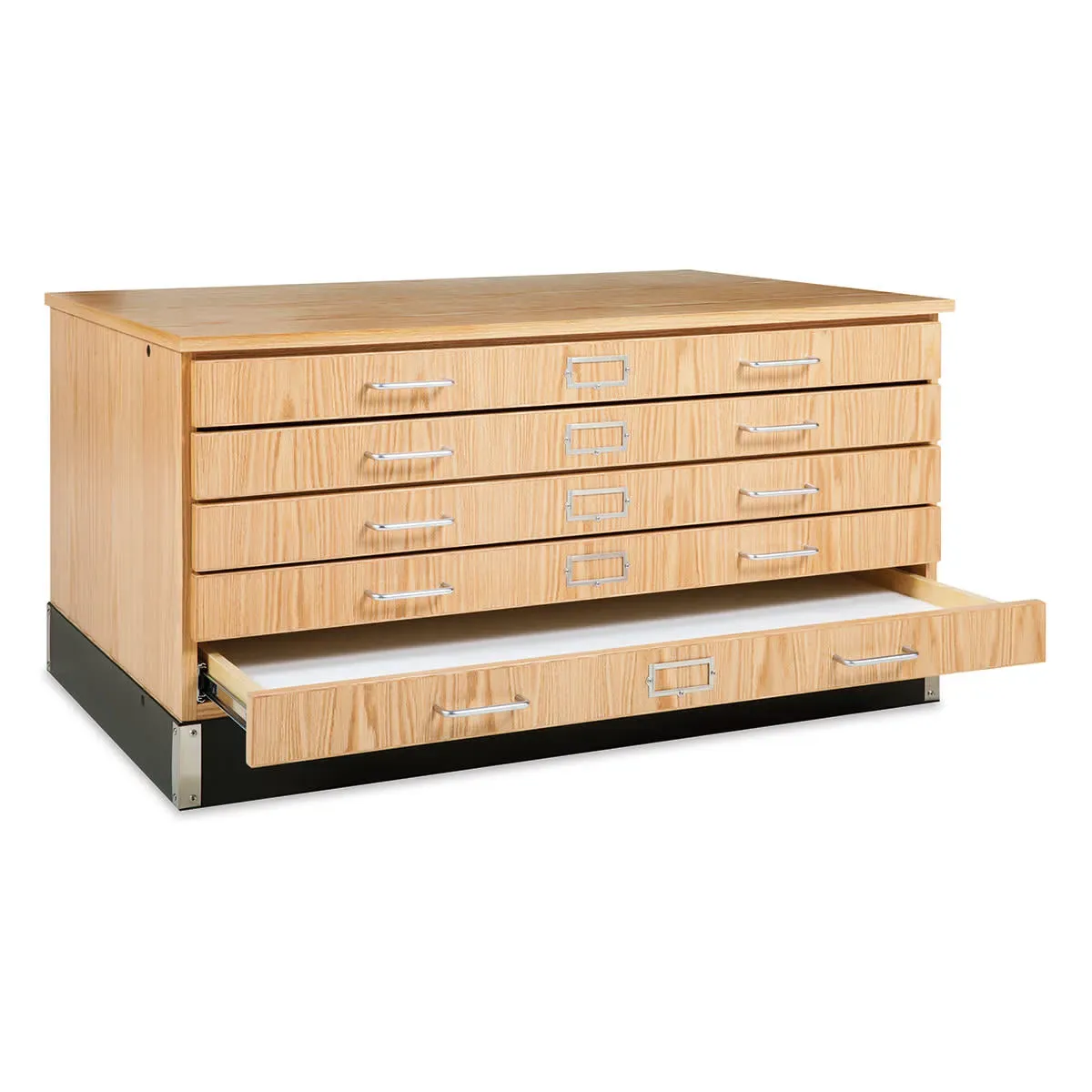
Once you know which size you need, the next big decision is the material. Most flat files come in two main types: metal and wood. Both can hold your art just fine but have different looks and benefits.
Metal Flat Files
- Modern Look: They often have a sleek style, which might fit a contemporary studio vibe.
- Durable and Stable: Metal flat files can handle heavy use and might last many years.
- Easy to Clean: Wipe them down with a cloth, and any dust or smudges come off quickly.
Remember that metal files can get chilly or a bit noisy if the drawers are loose. But overall, they’re usually reliable and sturdy.
Wooden Flat Files
- Classic Feel: A wooden file can give your studio a warm, traditional look.
- Less Industrial: It might blend better with home decor if your studio shares a space with living areas.
- Weight and Care: Wood can be heavier; if your region is very damp, you might have to watch humidity levels.
High-quality wooden flat files can also stand the test of time, but they may need some care now and then, like oiling or polishing, to keep the surface looking nice.
Must-Have Features of a Flat File
Beyond size and material, certain features can make using a flat-file more enjoyable. Here are some perks to look for when browsing options:
- Drawer Stops
These keep the drawer from sliding out or falling on your foot. They’re a small addition, but they help protect both you and your art. - Smooth Glides
If the drawer glides aren’t smooth, you might tug and shake your artwork each time you open a drawer. Smooth-gliding rails can save you frustration. - Label Holders
Little slots on the front of each drawer let you add labels like “Watercolors” or “Sketches: 2023.” This makes it easier to find things fast. - Locks
If you’re concerned about security or your studio is in a busy area, a lock can stop others from grabbing a piece without your permission. Not everyone needs this, but it’s a good option to have. - Modular or Stackable Design
Some flat file units let you stack additional sections on top, allowing you to grow your storage as your art collection expands. - Caster Wheels
If you often rearrange your space, wheels can be a lifesaver. However, be careful with super-heavy loads since rolling a massive cabinet can be tricky.
Organizing Your Drawers

Even the best product won’t help much if you randomly toss everything in. A little organization of the flat file can go a long way. Here are some tips:
- Separate by Medium: Keep oils, acrylics, and pastel drawings in different drawers, especially if there’s a risk of residue or dust transferring.
- Use Interleaving Paper: Place a sheet of acid-free paper between delicate art (like charcoal) and each piece to avoid smudging.
- Label Clearly: If your file has label holders, slip in a small note for each drawer. Otherwise, use a neat sticker or masking tape so you know exactly what’s inside.
- Sort by Date or Project: Group those pieces together if you work in a series. This way, you can quickly track your creative growth or locate a piece you made last month.
Finding the Right Spot or Flat Files in Your Studio
We’ve talked about size, material, and features. The next question is, “Where do I put this thing?” The location of your flat file can affect how often you use it and how safe your art remains.
- Easy Access: If you plan to open the drawers daily, keep the file in a spot that’s easy to reach.
- Avoid Direct Sunlight: Harsh sunlight can fade colors and possibly warp delicate surfaces. Aim for a cool, shaded corner.
- Stable Floors: A flat file can get heavy, especially when full of art. Make sure the floor can support the weight.
- Ventilation: Try not to cram your file against a damp wall. Moisture can lead to mold or damage, especially if it seeps into the cabinet.
Where to Buy a Flat File
If you're looking to buy a GFlat file, two of the most trusted places are Blick Art Materials. Blick is a top choice for artists and students because it offers a wide selection of flat files in different sizes and styles. Whether you're shopping in-store or online, their website makes it easy to compare options and find what fits your space and budget.
Amazon is another great option, especially if you want fast shipping or need to check user reviews before making a decision. They often carry both brand-name and budget-friendly flat files, so you can find something that works for your storage needs.
Both Blick and Amazon are reliable and offer secure shopping experiences. It's best to compare prices, read product details carefully, and check for shipping options before placing your order. These two platforms make buying a GFlat file simple and stress-free.
Tips for Ongoing Maintenance
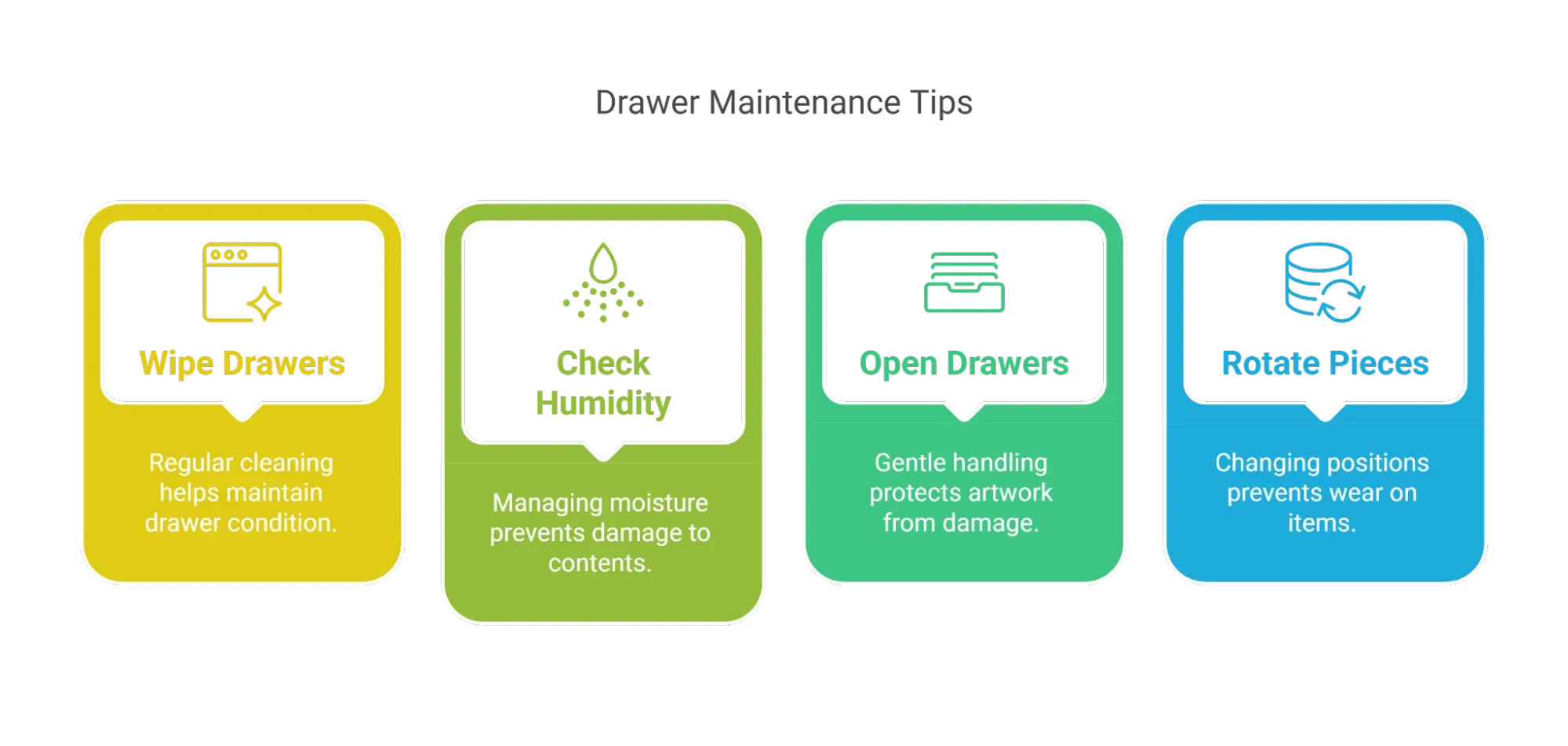
After you bring your new flat file home and start storing artwork, a bit of routine care can keep it in top shape:
- Wipe Drawers Occasionally: Dust can gather, so use a soft cloth to clean the inside surfaces.
- Check Humidity: If you live in a humid region, add silica gel packets to drawers to reduce moisture.
- Open Drawers Gently: Tugging them out too fast might cause friction or even damage your artwork if it’s near the front.
- Rotate Pieces: If some items stay in the file for long, consider rotating their position occasionally, especially if you have stacked different paper types.
Final Thoughts
Choosing the correct flat file for your studio comes down to three main factors: size, material, and features. You want something big enough to hold your art without bending, made of a material that suits your style and climate, and equipped with details like smooth glides or drawer stops that make everyday use a breeze. Once you find the perfect fit, you’ll have a reliable storage spot that keeps your creations safe and easy to find.
A well-chosen flat file can stay with you for years, becoming a foundational part of your workspace. It’s not just a piece of furniture—it’s a guard for your hard work, an organizer for your mind, and a subtle motivator that nudges you to keep creating. After all, when storage is taken care of, you can focus on what truly matters: making art.
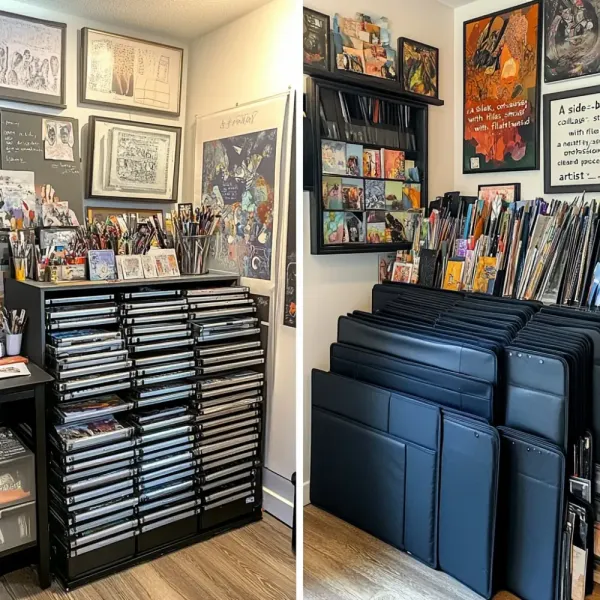
flat-files
Flat Files vs. Portfolios: Which is the Best Storage Solution for Your Art?
Not sure whether to use a flat file or a portfolio? Find out the key differences - and find out which storage method best fits your artwork and workflow.
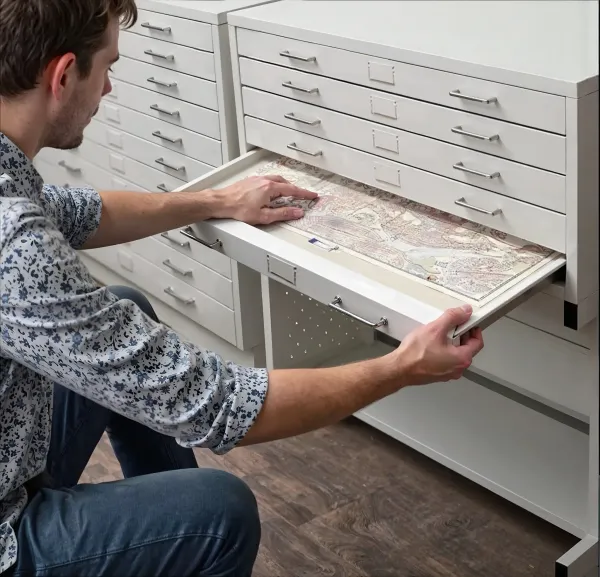
flat-files
Why Every Artist Needs a Flat File for Storing Artwork
Tired of damaged or curled artwork? A flat file could be the game-changer your studio needs. Discover why smart artists swear by this simple storage solution.

flat-files
How to Properly Store and Protect Your Artwork in a Flat File
Protect your artwork like a pro - learn how to use a flat file to prevent damage, fading, and clutter. Simple tips every artist should know for long-term storage.
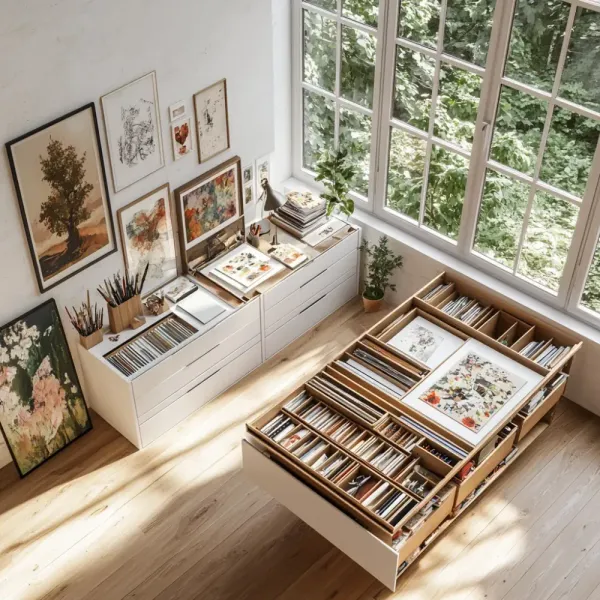
flat-files
How to Organize and Archive Your Artwork with a Flat File System
Struggling with piles of loose artwork? Learn how a flat file system can help you organize, protect, and archive your art - so everything stays safe, tidy, and easy to find
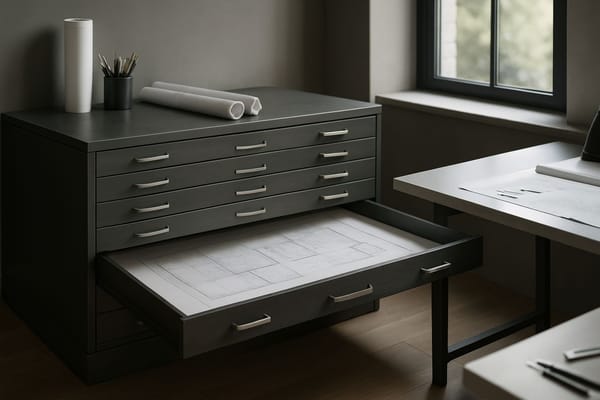
flat-files
How to Choose the Right Flat File Cabinet for Art, Blueprints, and Drawings?
Find the perfect flat file cabinet for your artwork and plans. Compare materials, sizes, and features to choose smarter.
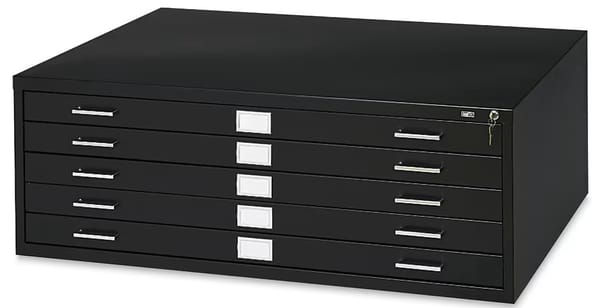
flat-files
Safco Flat Files – Durable & Professional Storage for Artists
Store your drawings and artwork safely with Safco Flat Files - strong, stackable steel cabinets built for studio and office organization.
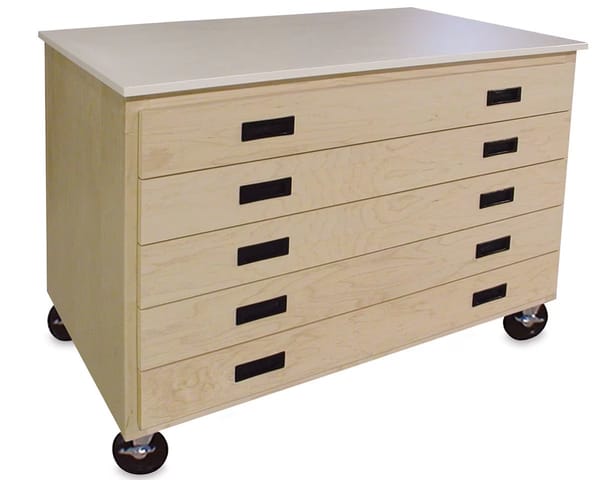
flat-files
Hann Mobile Art Storage Cart – Organized Paper Storage on the Move
Organize your studio with the Hann Mobile Paper Storage Cart. Strong, mobile, and made to last - perfect for artists and art educators.
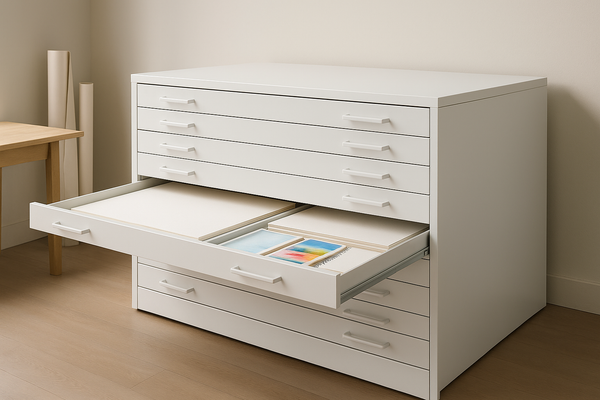
flat-files
Art Paper Storage Cabinet – Keep Artwork Flat, Clean & Ready to Use
Keep your paper flat and protected with an Art Paper Storage Cabinet - wide drawers, durable build, and perfect for studios or classrooms.
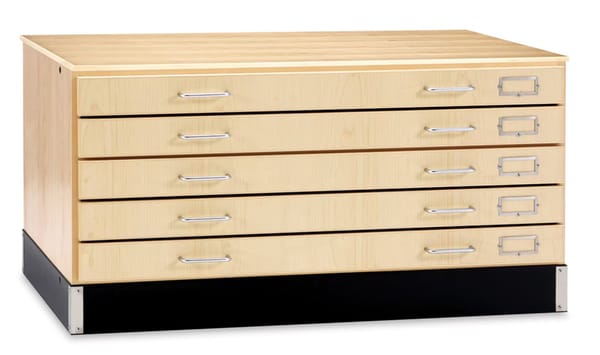
flat-files
Diversified Spaces Flat File – Reliable Storage for Artists
Diversified Spaces Flat File offers strong, wide storage for artwork and blueprints. Keep sheets flat, clean, and protected in any studio or classroom.
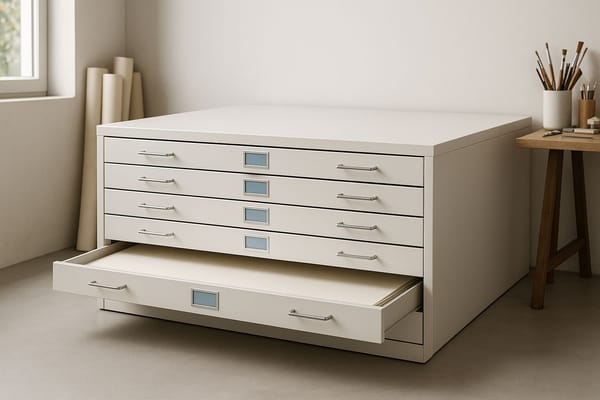
flat-files
5 Drawer Flat File Cabinet: A Complete Buying and Setup Guide
Keep artwork and documents flat with a 5 Drawer Flat File Cabinet - durable, wide storage perfect for studios, classrooms, and offices.